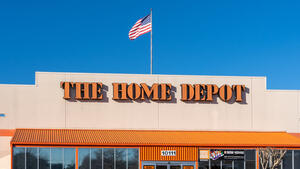If the past two years have taught us anything, it’s that unpredictability rules the day. Still, as we leave one year behind and enter a new one, it’s worth taking a look at the ups and downs of home furnishings retail in 2021 and exploring how those market forces will shape the year to come. In this four-part series, Retail Watch columnist Warren Shoulberg is taking stock of the current state of play, the characteristics that will define success in 2022, retail winners (and losers) amid the current climate, and which companies are on track to make waves in the new year. Here, he outlines which home furnishings retailers are getting it right—and which ones aren’t.
It’s the New Abnormal—and in the latest installment in this series on what it means for the industry, we’re going to name names and say which retailers in the home space are truly the industry’s best in class. We’ll also discuss those brands that aren’t quite there yet—and may not be long-term players after all.
The criteria for judging these companies are the Magnificent Seven, outlined in last week’s column—the business attributes necessary for successful retailing today. In case you need a refresher course, they are:
1. Omni-everything
2. The store as destination
3. The good stuff
4. Contented cows
5. Hospitality
6. Supply chain management
7. Yar-tailing
In ranking retailers based on these criteria, we gave each one a score, evaluating how many of the Seven they embrace and employ in their business. For housekeeping purposes, we kept the list to national retailing operations, rather than regional or local players, and included both home furnishings specialty brands as well as general merchandise retailers who sell home products. In a world of intangibles, infinite variables and the vagaries of hitting a moving target, it’s as exact a science as is possible—an objective process based on a subjective foundation.
We’ve grouped these retailers into three categories: the good, the bad and the ugly. The first two are straightforward judgment calls, but the third is more about uncertainty and ambiguity rather than a declaration about their viability. They might succeed … but then again, they might not.
The Good
These are the eight retailers who scored highest in rankings, though many of them have an Achilles’ heel.
1.Target: Its combination of in-store and online offerings is extraordinary, with an embrace of omnichannel capabilities that is best in class.
2. RH: Shows the importance of physical locations, combined with DTC print and digital initiatives.
3. Amazon: In a class by itself online, but increasingly recognizing the importance of stores, particularly with its “just walk out” technology.
4. TJX brands: Consumer affinity for TJ Maxx, Marshalls and HomeGoods—combined with superior operations—make them strong; their weakness online is an outlier.
5. Williams-Sonoma brands: Unique positioning of its multiple nameplates (which include Williams-Sonoma, Pottery Barn, West Elm and Rejuvenation), which is executed well both in-store and online, make them outstanding.
6. Deep discounters like Aldi and dollar-store chains: The consumer wants a bargain, and nobody does it better—but again, these players are vulnerable online.
7. The clubs: Costco and Sam’s Club both have operational efficiencies above most, and the built-in membership program gives them instant advantage.
8. Good independent retailers: The shop-local movement is benefiting tiny specialty stores, especially if they have developed an online component.
THE BAD
These retailers had the worst scores in our ranking and might not have a future post-pandemic.
1. Sears and Kmart: They barely exist anymore, except as a warning to others who forget to change or who let private equity control the retail process.
2. Department store chains: There are only a few left, but their business model is broken beyond repair.
3. Weird zombie brands: These dead companies are bought by third parties in the hopes of successful comebacks, but most fail once again. (The 2020 revival of Linens ’N Things is a good example of this.)
4. Bad independent retailers: Those shops that were hobbies or afterthoughts don’t have the focus to stay in business.
The Ugly
These are the retailers for whom the future is not decided. They received middling scores and could go one way or the other. Only time will tell.
1. Bed Bath & Beyond: In the middle of their turnaround, which has shown some hopeful signs but not enough for some skeptics.
2. JCPenney: A retailer still in search of a reason to be, made more difficult by ownership structure and management changes.
3. Wayfair: An online powerhouse—but unless it moves aggressively into physical stores, it’s unlikely to ultimately succeed.
4. Macy’s: Caught up in the failing department store model, but with the best chance in its class to find a way to move forward.
5. Nordstrom: Like Macy’s, it has many positive attributes (more, in fact) but still relies on a mall model that has to change.
6. Walmart: History has not been kind to the name at the top of the retail heap, and it needs to find a way to be truly competitive with Amazon.
7. Average independent retailers: There’s no room for the marginal specialty shop that doesn’t have the financial and management commitment needed in today’s market.
People always talk about the death of legacy retailing. Nothing could be further from the truth. Many longtime companies have found a way to stay ahead of the pack, and it is only the mediocre brands that are falling increasingly behind. It’s truly the survival of the fittest—and this year, we’ll have a front-row seat as it all plays out.
Next week, Shoulberg shares his “Six to Watch,” the retailers that he’s got his eye on as the most newsworthy contenders in 2022—brands whose actions will say much about both their own companies and the broader industry.
Homepage photo: ©Alex/Adobe Stock
____________
Warren Shoulberg is the former editor in chief for several leading B2B publications. He has been a guest lecturer at the Columbia University Graduate School of Business; received honors from the International Furnishings and Design Association and the Fashion Institute of Technology; and been cited by The Wall Street Journal, The New York Times, The Washington Post, CNN and other media as a leading industry expert. His Retail Watch columns offer deep industry insights on major markets and product categories.






























